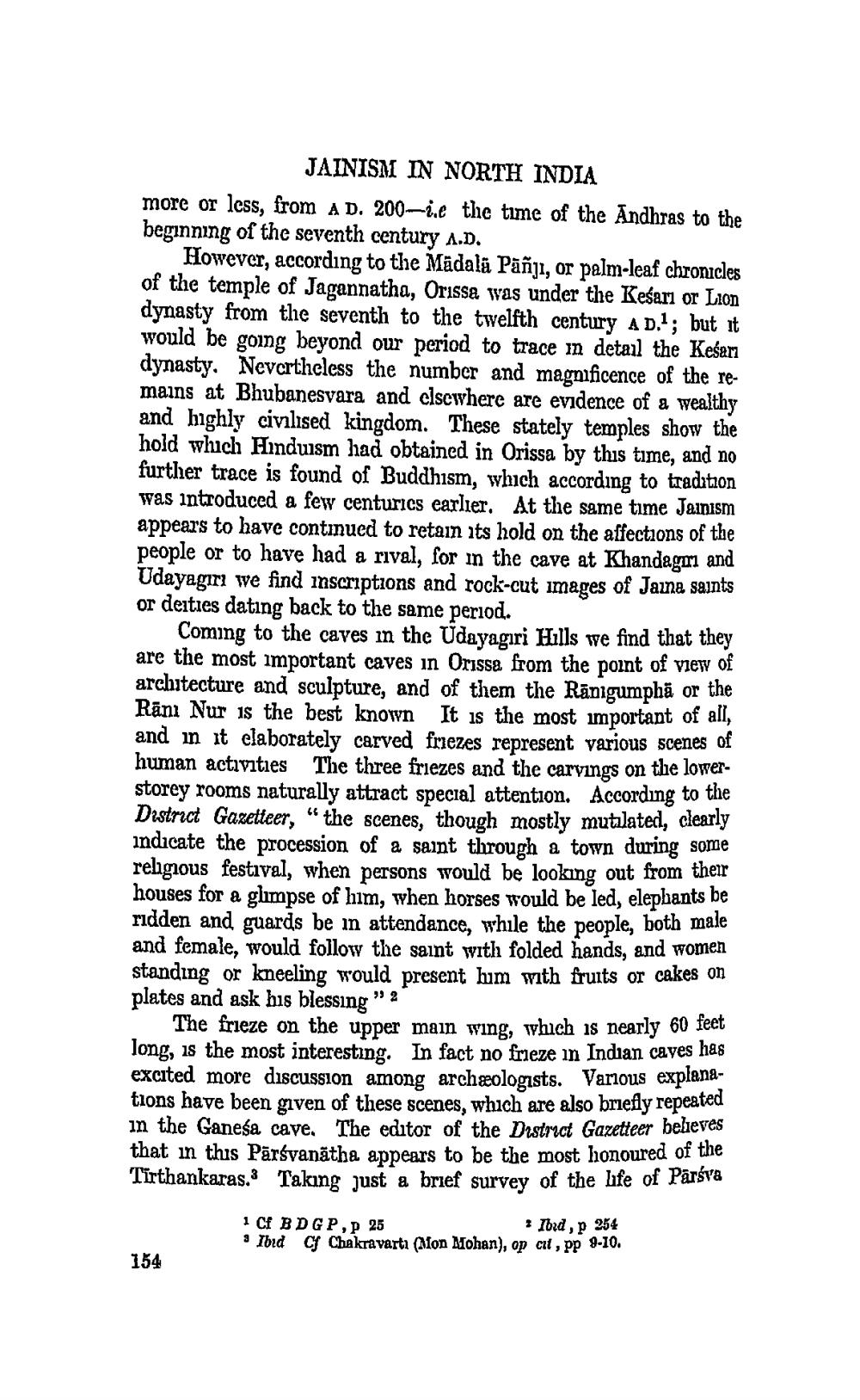________________ JAINISM IN NORTH INDIA more or less, from A D. 200-ie the time of the Andhras to the beginning of the seventh century A.D. However, according to the Madala Panji, or palm-leaf chronicles of the temple of Jagannatha, Orissa was under the Kesari or Lion dynasty from the seventh to the twelfth century AD.!; but it would be going beyond our period to trace in detail the Kesar dynasty. Nevertheless the number and magnificence of the remains at Bhubanesvara and elsewhere are evidence of a wealthy and highly civilised kingdom. These stately temples show the hold which Hinduism had obtained in Orissa by this time, and no further trace is found of Buddhism, which according to tradition was introduced a few centuries earlier. At the same time Jainism appears to have continued to retam its hold on the affections of the people or to have had a rival, for in the cave at Khandagri and Udayagiri we find inscriptions and rock-cut images of Jama saints or deities dating back to the same period. Coming to the caves in the Udayagiri Hills we find that they are the most important caves in Orissa from the point of view of architecture and sculpture, and of them the Ranigumpha or the Rani Nur is the best known It is the most important of all, and in at elaborately carved frezes represent various scenes of human activities The three friezes and the carvings on the lowerstorey rooms naturally attract special attention. According to the Destruct Gazetteer," the scenes, though mostly mutilated, clearly indicate the procession of a saint through a town during some religious festival, when persons would be looking out from their houses for a glimpse of him, when horses would be led, elephants be ridden and guards be in attendance, while the people, both male and female, would follow the saint with folded hands, and women standing or kneeling would present him with fruits or cakes on plates and ask his blessing"? The frieze on the upper main wing, which is nearly 60 feet long, is the most interesting. In fact no freze in Indian caves has excited more discussion among archaeologists. Various explanations have been given of these scenes, which are also briefly repeated in the Ganesa cave. The editor of the District Gazetteer believes that in this Parsvanatha appears to be the most honoured of the Tirthankaras. Taking just a brief survey of the hfe of Parsva 1 C BDGP, 25 * Tord , p 254 * Toid C Chakravarta (Mon Mohan), op cit, pp 9-10. 154




